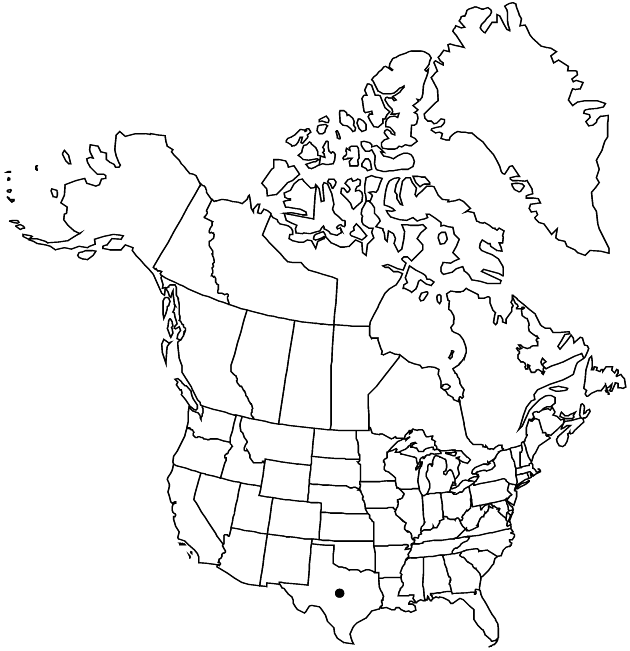Ratibida peduncularis var. picta
Ann. Missouri Bot. Gard. 22: 74. 1935.
Endemic
Basionym: Lepachys peduncularis var. picta A. Gray Smithsonian Contr. Knowl. 3(5): 107. 1852
Treatment appears in FNA Volume 21. Treatment on page 62.
Leaves lyrate-pinnate, 2–14 × 1–6.5 cm, lobes 3–7 (terminal lobes lanceolate-ovate, toothed to parted, 3–50 mm wide). Ray corollas mostly purple, sometimes with some yellow. Cypselae pectinate-fimbriate (adaxial margins). 2n = 28.
Phenology: Flowering Apr–Oct.
Habitat: Sandy seacoasts
Elevation: 0–50 m
Discussion
Variety picta has been reported to hybridize with var. peduncularis (E. L. Richards 1968) and Ratibida columnifera (S. W. Jackson 1963).
Selected References
None.
Lower Taxa
None.
... more about "Ratibida peduncularis var. picta"
winged +
introrse +
connate +
truncate +
herbaceous +
subulate +
scarious +
absent +
hirsute +
papillate +
corymbiform +
continuous +
decurrent +
lanceolate;ovate or oblanceolate +
winged;ribbed;winged;ribbed +
1;15 +
proximal +
stigmatic +
absent +
zygomorphic +
monomorphic +
dimorphic +
pectinate-fimbriate +
staminate +
columnar +
8mm;13mm +
Tex. +
straight +
hirsute +
distinct +
proximal +
1;5 +
bisexual +
dispersed +
oval +
singly +
discoid +
indeterminate +
1;12 +
surrounding +
rotate +
5mm;15mm +
4mm;12mm +
petiolate +
lyrate-pinnate +
alternate +
2-pinnatifid;lyrate-pinnate +
2-carpellate +
inferior +
attached +
anatropous +
1.5mm;3mm +
persistent +
falling +
absent +
coroniform +
tough +
thick +
absent +
connate +
persistent +
distinct +
falling +
unequal +
toothlike +
Ann. Missouri Bot. Gard. +
1935 +
neuter +
absent +
sterile +
paleate +
subspheric;columnar +
fibrous +
exalbuminous +
modifed +
Endemic +
alternate +
branched +
erect +
strigoso-hirsute +
2-branched +
papillate +
Ratibida peduncularis var. picta +
Ratibida peduncularis +
variety +
cylindric +
equaling +
shorter +
taprooted +
perennial +
